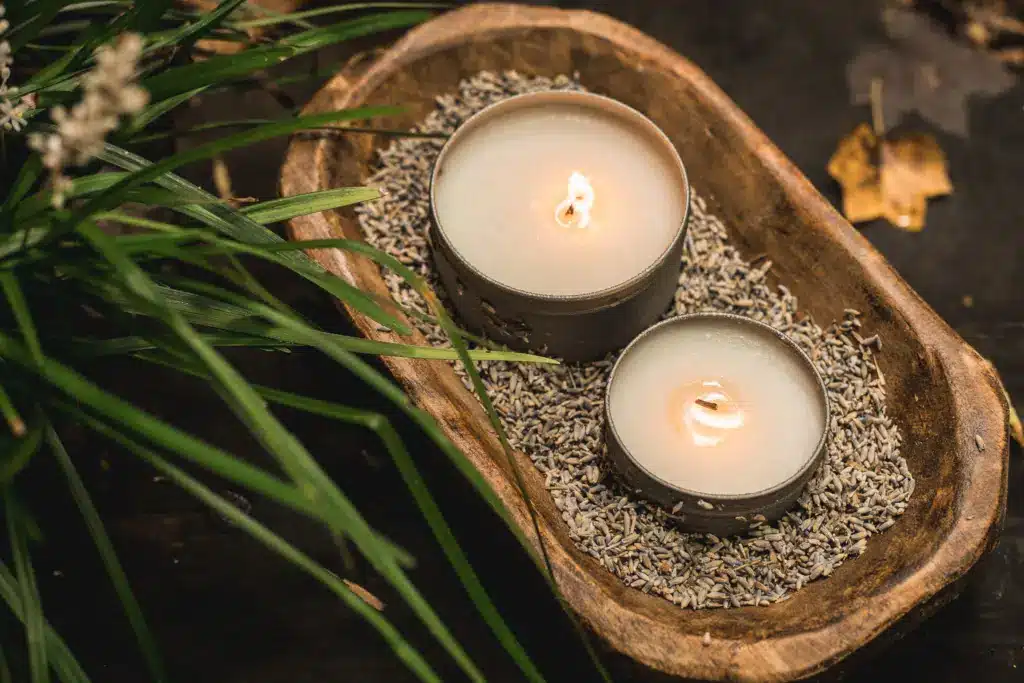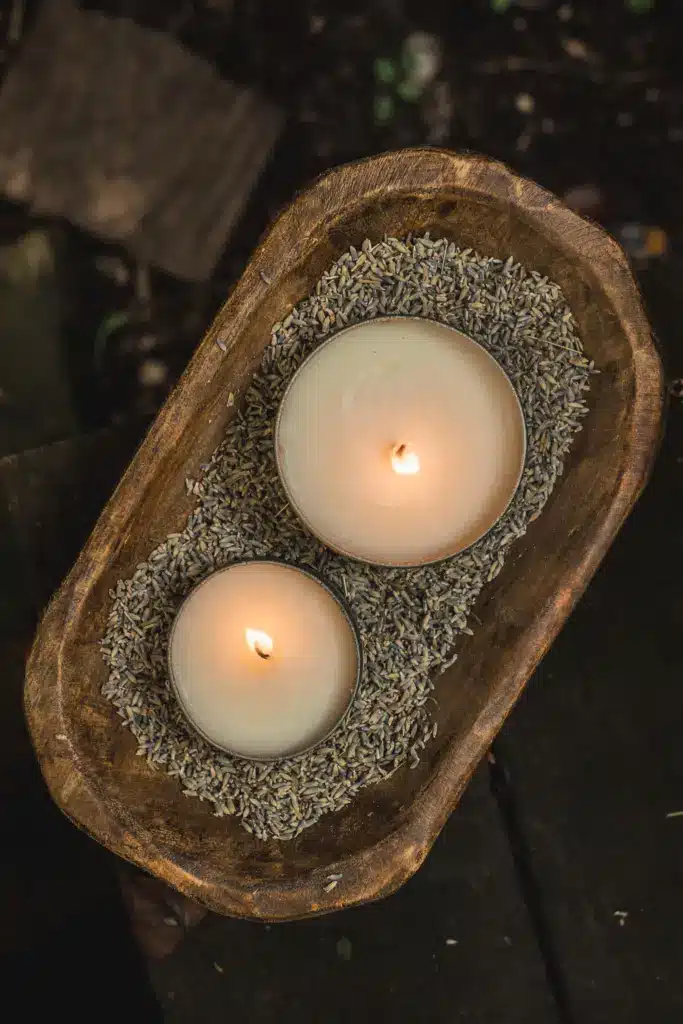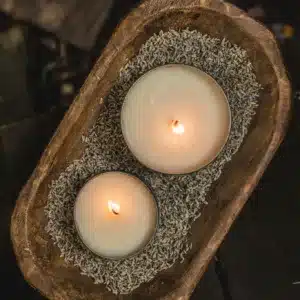
Creating a candle from tallow is as easy as melting and pouring! The tallow acts as the fuel source for the flame, resulting in a clean, non-toxic burn. You can certainly keep your tallow candles plain or you can add some delicious scents. Below I will share how I scent my candles using only natural, whole-food ingredients for a healthier, cleaner, more sustainable result.
Do I need to add wax to tallow candles?
Pure rendered tallow (which is 100% beef fat) acts as the fuel source for the flame of the candle. Because of this, you will not need any additional wax. If you want your candle to have a harder consistency, you can add some beeswax before melting everything together.
How to source your own tallow
You can either buy rendered tallow or render it yourself. Both are great options depending on how much time or money you are willing to spend on the project. I render my own now because I make so many tallow products and I get the fat for free from a local farmer. You can check out my blog here on how to render your own!
Containers for tallow candles
I love to keep and reuse old candle containers. Freezing them makes it much easier to get out old wax before making a new candle. Look around your house for candle tins, glass jars with lids, even old tea cups, as long as the container is heat-safe.
Scenting tallow candles with real ingredients
The problem with essential oils in candles is that they lose their scent when exposed to heat or the scent is so light that a very large (read: expensive) amount of oil is required for it to be detectable. Fragrance oils (which many “natural” candle companies use) contain many synthetic and man-made compounds that are harmful to our health. The solution? Using whole foods to scent candles. I’ve shared a few ideas below but I encourage you to get creative and see what you can find in your kitchen, garden, or Mountain Rose Herbs (where I buy all my bulk herbs).
- Add warming spices: cinnamon, cardamom, nutmeg, clove, vanilla, etc.
- Add citrus zest to the candle or infuse into the melted tallow then strain
- Infuse fresh or dried herbs and plants like rosemary, mint, eucalyptus, lavender, rose, pine needles, cedar bark, etc.
This post may contain affiliate links, which means I make a small commission at no extra cost to you. You can view my Privacy Policy Here.

Wicks
I like to buy a pack of these slow-burning wicks and cut them to the correct size. I prefer to wait until the candle is partially set before adding the wick and keeping it in place with a large bobby pin. You can also order these pre-cut wicks which already have the metal stands needed to keep them in place.
Containers
If you don’t have anything to reuse (or want a batch of pretty, uniform candles) you can buy some glass candle jars like these.
Tallow
Order online, check out some local farms, or make your own!
Coconut Oil
I add a few tablespoons of coconut oil to the melting tallow. This helps with consistency, burn time, and dripping.
READ THIS BEFORE STARTING
This recipe is a guide to making tallow candles but does not contain any measurements because they are unnecessary. Use as much tallow as you need to fill the containers you have. You will also need to add a tablespoon or two of coconut oil to the mixture. If you are making a larger batch (5-6 candles worth) do a 3 or 4 tablespoons of the coconut oil. If your batch is smaller, you will only need 1-2 tablespoons of coconut oil.

Homemade Tallow Candles
Ingredients
- Pure rendered tallow
- pure, virgin coconut oil
Instructions
- In a double boiler, completely melt tallow and coconut oil over medium heat
- Add herbs or other flavors to infuse (see notes on scents above)
- Remove from heat and let cool slightly. If infusing, allow enough time for the oil to take on the scent
- Strain out the infusing ingredients (give it a sniff to see if the scent is strong enough)
- Pour into heat-safe, candle container
- Allow to cool again slightly before adding wick – remember to use multiple wicks if making a larger candle
- Allow the candle to cool completely to room temperature before trimming the wick and placing the lid on top
Leave a Reply